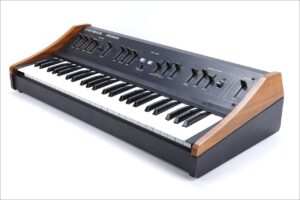Thonotosassa, FL / Syndication Cloud / August 25, 2025 / Sam Toney

Key Takeaways
- Mathematical Foundation: Modern multiverse fiction incorporates real physics equations and string theory principles rather than relying on pure speculation.
- Scientific Accuracy: Authors now research actual particle physics and dimensional analysis to create believable parallel reality scenarios.
- CERN Integration: Contemporary stories feature real-world research facilities like the Large Hadron Collider as plot devices for dimensional exploration.
- Genre Evolution: “Plausible sci-fi” represents a new category where the scientific method drives narrative development instead of serving as background decoration.
- Reader Demand: Many science fiction readers prefer books grounded in actual science over purely speculative concepts.
Pick up any science fiction book from the 1960s, and you’ll find parallel dimensions explained through magic portals or mysterious machines that work “just because.” Today’s readers want stories that make them wonder if the science could actually work, not just suspend their disbelief for a few hundred pages.
The problem with most multiverse fiction isn’t the imagination—it’s the gap between wild creativity and scientific plausibility. Authors often treat parallel dimensions like fantasy realms, complete with hand-waving explanations that would make a physicist cringe, and means readers end up entertained but educated about nothing, missing the chance to explore science through storytelling.
The Science Behind Modern Multiverse Fiction
Real physics offers plenty of material for compelling stories. Ideas such as string theory suggest that our universe might contain up to eleven dimensions, most of which remain hidden from our direct observation, and quantum mechanics introduces the many-worlds interpretation, where every quantum measurement creates branching realities. These aren’t science fiction concepts, but areas of scientific research with mathematical foundations.
String Theory as Storytelling Foundation
Modern multiverse authors build their narratives around actual string theory mathematics rather than inventing convenient plot devices. These stories feature characters who develop working equations to detect or access parallel dimensions, grounding the fantastic elements in recognizable scientific methodology. The tension comes from the uncertainty of whether the science will actually work, not from battling alien monsters in alternate realities.
String theory provides natural conflict through its inherent complexity and unproven status within the scientific community. Characters must grapple with mathematical challenges that mirror real-world physics research, creating authentic stakes that resonate with readers who appreciate intellectual rigor.
Quantum Mechanics and Parallel Realities
The many-worlds interpretation offers another scientifically valid approach to multiverse storytelling. This theory suggests that quantum measurements create actual branches in reality rather than simply revealing pre-existing outcomes. Authors can explore this concept through characters who develop technology to observe or interact with these quantum branches.
Stories built on quantum mechanics principles often feature protagonists working with particle accelerators, quantum computers, or other real scientific instruments. The science becomes part of the plot development rather than a convenient explanation for impossible events.
What Makes Science-Based Multiverse Fiction Work
Equation-Based Plotting
The most effective multiverse stories treat scientific formulas as integral plot elements rather than decorative details. Characters develop mathematical models that drive the narrative forward, with each equation revealing new possibilities or creating fresh obstacles, an approach that mirrors real scientific discovery, where mathematical insights lead to experimental breakthroughs.
Equation-based plotting requires authors to research actual physics principles and present them accurately within the story context. Readers benefit from learning genuine scientific concepts while following engaging character development and plot progression.
Real Research Facilities as Settings
Contemporary multiverse fiction often features actual research institutions like CERN, Fermilab, or university physics departments as primary settings. These locations provide an authentic atmosphere while grounding speculative elements in recognizable scientific environments. Characters work with real equipment and face genuine research challenges, making their dimensional discoveries feel plausible.
Using actual research facilities also allows authors to incorporate current scientific developments into their narratives. Stories can reference recent particle physics discoveries or ongoing research projects, connecting fiction to real-world scientific progress.
The Emotional Component
Science-based multiverse fiction succeeds when it balances intellectual rigor with human stakes. Characters must face personal consequences for their dimensional research, whether through professional risks, relationship challenges, or existential questions about reality’s nature. The science provides the framework, but emotional authenticity drives reader engagement.
Philosophical Depth
Stories exploring parallel dimensions naturally raise questions about identity, consciousness, and the nature of existence. Science-based approaches allow authors to examine these themes through the lens of actual physics rather than pure speculation and characters might grapple with the implications of quantum consciousness or the psychological impact of discovering multiple versions of themselves.
The most compelling multiverse stories use scientific discovery as a catalyst for philosophical exploration, allowing readers to consider profound questions while following exciting plot developments.
Expert Insights on Plausible Sci-Fi
Medical professionals and researchers who write science-based fiction bring unique perspectives to multiverse storytelling. Their scientific training helps them identify which physics concepts offer the most narrative potential while maintaining accuracy. These author-scientists often collaborate with academic researchers to ensure their fictional scenarios remain grounded in legitimate scientific possibility.
One psychiatrist-turned-author, Sam D. Toney, M.D., has developed what he calls “plausible sci-fi,” where mathematical equations drive plot development and real research facilities serve as story settings. His approach demonstrates how professional scientific experience can enhance fictional storytelling without sacrificing entertainment value.
This method appeals to readers who want both engaging narratives and educational content, creating stories that inform while they entertain.
Finding Quality Science-Based Multiverse Fiction
Look for authors who cite their scientific sources or acknowledge physics consultants in their acknowledgments. These details indicate serious research efforts rather than casual speculation. Books that include mathematical appendices or scientific explanations often provide the most educational value alongside their entertainment.
Reader reviews frequently mention whether stories feel scientifically plausible, making online bookstore comments useful for identifying well-researched multiverse fiction. Academic backgrounds in the author’s biography also suggest potential for scientific accuracy.
The best science-based multiverse stories leave readers curious about real physics concepts, inspiring further learning about string theory, quantum mechanics, or particle physics research.
If you’re interested in following the development of scientifically grounded multiverse fiction, several authors now document their research processes online, sharing information about how real physics influences their storytelling decisions.
Sam Toney
10072 Main Street
Thonotosassa
FL
33592
United States







































